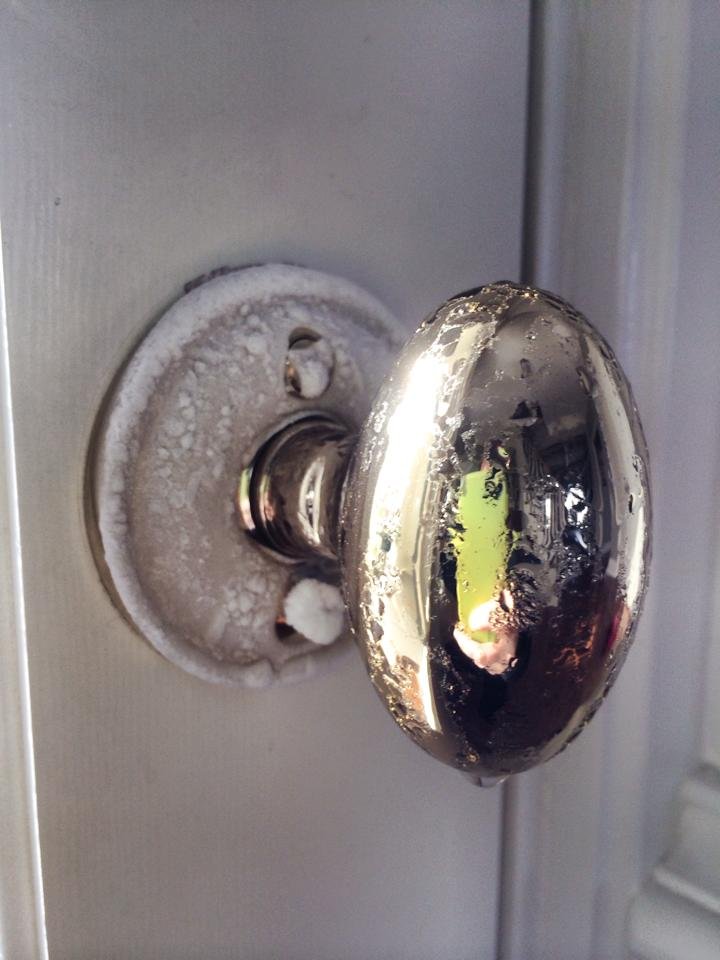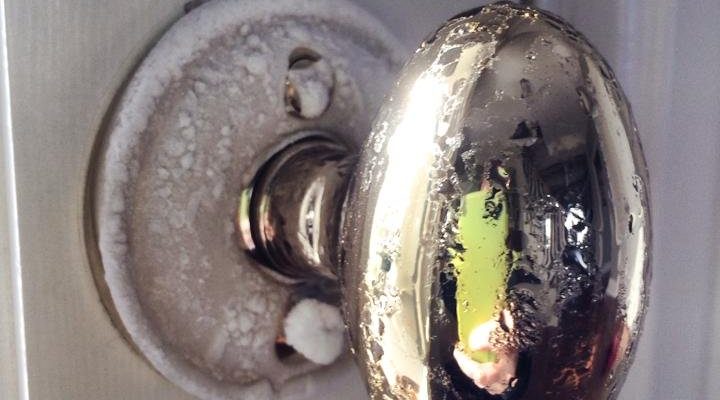
Honestly, it’s easy to ignore a cold door—at least until you notice your energy bill creeping up or your feet never quite warming up in the hallway. But there’s a real reason for that icy touch, and it almost always boils down to the way your door is built and insulated. Brands like Masonite, Therma-Tru, and JELD-WEN design all kinds of exterior doors, but even top-notch doors can let you down if the insulation isn’t up to the task or the installation leaves tiny gaps behind.
How Exterior Doors Lose Heat
Let me explain what’s happening behind the scenes. When your door feels cold, it’s not just the surface reacting to the weather—it’s actually a sign that heat is escaping from inside your home and cold air is creeping in. This process happens because of something called *thermal bridging*. That’s just a fancy way of saying that materials like metal and wood can carry the cold from the outside straight to the inside, sort of like a spoon left in a bowl of hot soup quickly turning cold.
But here’s the thing: it’s not always the door’s fault. Sometimes, the frame or even the weatherstripping—the rubbery stuff around the edge—lets cold air sneak through. It doesn’t matter if you’ve got a high-end Andersen remote-controlled lock or a classic wooden setup, the basic science is the same. If there’s a gap, air will find it.
Doors also lose heat through material choice. Solid wood doors can be beautiful, but they don’t always insulate as well as modern fiberglass or insulated steel models. And if you’ve got glass panels in your door, those can be another weak spot for heat loss unless they’re double- or triple-paned.
Why Insulation Matters for Exterior Doors
You might be wondering why a little cold air matters. Isn’t a chilly door just part of winter? Well, not exactly. Poor insulation around your exterior door doesn’t just make the door cold—it can make your whole entryway drafty, mess with your thermostat, and even drive up costs for heating or cooling your home.
Think about the remote for your garage door opener: If the battery gets low or the signal can’t make it through the wall, it just won’t work. Your front door works the same way—with good insulation acting like a strong battery, keeping the warmth in and the cold out. Without it, your house is fighting a losing battle against the weather outside, and your furnace has to work a lot harder to keep up.
A well-insulated door, on the other hand, acts like a thermal barrier. That means less energy gets wasted and your living space stays comfortable. With energy-efficient models from brands like Pella or ProVia, you might barely notice a difference between standing by the door and sitting by the fireplace. Pretty great, right?
Common Reasons Exterior Doors Feel Cold
Here’s where it gets practical. There are a handful of everyday reasons your exterior door might feel like the Arctic:
- Poor or missing insulation: Older doors, or cheap new ones, might not have any insulation at all.
- Weatherstripping is worn out: That thin rubber strip around the doorframe can get brittle, cracked, or peel away—leaving gaps for cold air to sneak in.
- Improper installation: If the door isn’t level or doesn’t fit snugly, even the best insulation can’t close those gaps.
- Material selection: Hollow-core doors and those with lots of glass lose heat much faster than insulated steel or fiberglass options.
Honestly, you can have the fanciest remote-controlled deadbolt or the coolest smart lock, but if there’s a big crack under your door, you’ll feel it every time the wind picks up.
How to Check If Your Door’s Insulation Is the Problem
Before you start troubleshooting or calling in the pros, there are a few easy ways to see if insulation is your issue.
- Touch test: Run your hand around the edges and surface of the door. If it feels especially chilly in certain spots, that’s likely where heat is escaping.
- Light test: On a dark evening, turn off indoor lights and shine a flashlight from outside. Have someone inside look for light leaking around the frame—those spots need attention.
- Draft test: Hold a tissue or lighter near the edges while the door is closed. If it flutters or the flame flickers, air is moving where it shouldn’t.
Anything you find here is a valuable clue. Even a universal fix like new weatherstripping or a draft stopper might solve your problem if you catch it early.
Materials Make a Difference: Which Doors Stay Warmest?
Not all doors are created equal, and material really does matter. Here’s a breakdown:
- Wood: Classic and beautiful, but unless it’s a thick, solid hardwood, it won’t insulate as well as some newer options.
- Steel: Surprisingly solid against break-ins, but if it’s not filled with insulating foam, it can conduct cold like a metal fence post in January.
- Fiberglass: This is the sweet spot for many homeowners. It can be molded to look like wood, but it’s packed with insulation inside and barely transfers the cold.
- Glass: Decorative glass panels look gorgeous but act as a weak link unless double- or triple-paned.
When shopping for a new door, don’t just look at the brand or style—ask about what’s inside. That hidden insulation layer or foam core can make all the difference in keeping your home cozy.
How Weatherstripping and Seals Impact Door Warmth
Even a perfectly insulated door won’t do its job if the seals around it are worn out. Think of weatherstripping like the rubber gasket on a fridge door: without it, the cold leaks in and the inside just doesn’t stay at the right temperature.
Most exterior doors use some form of rubber, silicone, or foam weatherstripping that runs along the frame. Over time, this stuff gets squished, torn, or just plain old. Gaps open up—sometimes they’re big enough to see daylight, but often they’re small enough to miss until you feel the chill.
Swapping out weatherstripping is one of the easiest DIY fixes for a cold door. You just need to buy a roll of new weatherstripping (universal sizes fit most brands), peel off the old, and stick on the new. It’s battery-simple—no need to code, sync, or reset anything.
Thresholds and Door Sweeps
Don’t forget the bottom edge of the door, either. If there’s a visible gap or draft at your feet, you probably need a new threshold seal or door sweep. These inexpensive strips of rubber or bristle act as a final defense against cold air sneaking in from below.
Upgrading Your Door for Better Insulation
If you’ve checked the seals, swapped out the weatherstripping, and your exterior door is still cold to the touch, it might be time to think about upgrading. Here’s the thing: sometimes, you just can’t make an old, thin door into something it’s not.
Modern insulated exterior doors—especially those from reputable brands—have inner foam cores or multi-layer designs that are miles ahead of single-pane wood or hollow-core models. Installation is key here, too; even the best door won’t work well if there are gaps around the frame or it doesn’t close tightly.
You might be tempted by universal door kits or aftermarket panels, but honestly, a complete replacement is often the most reliable fix for serious cold or draft issues. If you’re handy, you can install a new door yourself, but don’t be afraid to call a pro if you want a tight, energy-efficient fit.
Other Ways to Keep the Cold at Bay
A cold door doesn’t have to ruin your cozy evening. Once you’ve tackled insulation and weatherstripping, there are a couple of other tricks you can try to cut down on drafts and keep your entryway comfortable:
- Add a storm door: This acts as a second barrier, blocking wind and boosting insulation.
- Use heavy curtains or door draft stoppers: Old-school but effective, especially if you’re not ready for a full door replacement.
- Install smart thermostats: Keeping the heat consistent can help balance out the chill from a less-than-perfect door until you can upgrade.
Every little bit helps—but at the end of the day, the most important fix is proper insulation and a snug seal.
When to Fix, Replace, or Upgrade Your Exterior Door
So, what’s the best move if you’re dealing with a cold-to-the-touch exterior door? Here’s my take:
- If weatherstripping is cracked or missing: Replace it first—it’s cheap, fast, and effective.
- If your door is older, feels hollow, or has a lot of glass: Consider an upgrade, especially if energy costs are going up.
- If you notice a lot of daylight or drafts despite fixes: It could be an installation issue or the door was never insulated properly to begin with. This is when calling in a pro makes sense.
Don’t just live with a cold hallway or an entry that feels like you left a window open. The right combination of insulation, weatherstripping, and a solid door makes a huge difference in both comfort and costs.
A cold door isn’t just a minor annoyance—it signals a weak link in your home’s thermal armor and can be a real drain on both your wallet and your warmth.
In the end, keeping your exterior door warm comes down to a handful of practical steps: understand where the cold’s coming from, check your insulation and seals, and don’t be afraid to upgrade if you need to. Your house—and your toes—will thank you.
